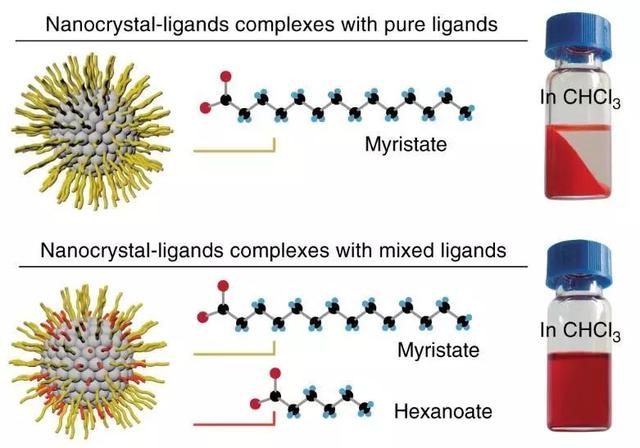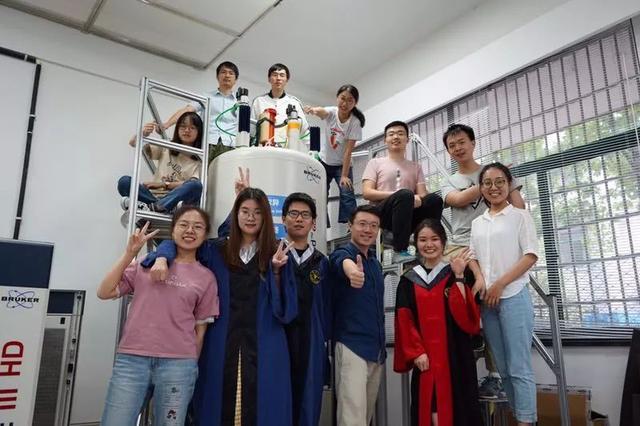Rotational freedom of mixed ligands improves solubility of nanocrystal-ligand complexes, SSNMR shows
The nanocrystal has captured immense attention among scientists in recent years and is expected to distinguish itself in the domains of display, illumination and detection in the future. Nonetheless, since its inception in the 1980s, the microscopic appearance of this future “superstar”, in particular the surface chemistry of the organic ligand, has remained elusive. Scientists can depict its rough “configuration”, but its details are based on pure guesswork. This therefore hampers the quantitative perception of its macroscopic phenomena and affects its optimization adversely.
PENG Xiaogang and KONG Xueqian from the Department of Chemistry, Zhejiang University, worked together to demonstrate the first dynamics of surface ligands using advanced NMR technology. Their findings are published in an article entitled “Partitioning surface ligands on nanocrystals for maximal solubility” in Nature Communications.
Prof. PENG Xiaogang specializes in “quantum dots (QD)”, which are tiny semiconductor particles with diameters in the range of 2-10 nanometers, having optical and electronic properties that differ from larger LED particles. Stimulated by light or electricity, they can emit precise and pure light.
QDs with different sizes can emit a wide spectrum of colors from blue and green to orange and red. They have enjoyed extensive applications in liquid crystal display. Scientists are currently endeavoring to apply the printing technology to fabricating QD display devices, thereby producing an unprecedented array of colors. However, the maturity of the printing technology is contingent upon further improvement of solubility of QDs and the idiosyncrasy of surface ligands.
Surface ligands are invisible, thus rendering it impossible to unravel this enigma. Prof. PENG has long been committed to exploring QDs so as to regulate their surface texture essentially.
The molecules of these ligands appear to be messy under the microscope and only their core structure can be displayed. “This is apparently inappropriate,” Prof. PENG observes, “Nanocrystals are at the forefront of materials chemistry and many phenomena challenge fundamental theories in chemistry.”
KONG Xueqian engages in research into solid-state NMR. In his laboratory, there are two superconducting MRI magnets which can generate a magnetic field 20,000 times higher than the Earth’s magnetic field.
“The nucleus is a small magnet able to interact with the ambient magnetic field. Scientists can edit the sequence of the electromagnetic wave like composing music and enable nuclei to dance elegantly,” remarks KONG Xueqian, “Due to the different movements of the nuclei and the impact of the surrounding ‘partners’, the location of the nuclei can be pinpointed.”

Through a series of experiments, PENG & KONG show that the atomic arrangement on the nanocrystal surface and ligand-ligand interactions can be precisely quantified via comprehensive solid-state nuclear magnetic resonance (SSNMR) methodologies. The analyses reveal that the mixed ligands of n-alkanoates on a CdSe nanocrystal segregate in a real partitions and the unique arrangement unlocks their rotational freedom. The mathematical model based on the NMR-derived ligand partition and dynamics successfully predicts the unusual solubility of nanocrystal-ligands complexes with mixed ligands, which is several orders of magnitude higher than that of nanocrystal-ligands complexes with pure ligands.
The molecular picture in this work serves as a theoretical blueprint for the flourishing of entropic ligands in the field of colloidal nanocrystals. Moreover, this NMR methodology will be applicable to diverse disordered and dynamic nanostructures and may provide crucial guidance for the dedicated regulation of their surface properties.
